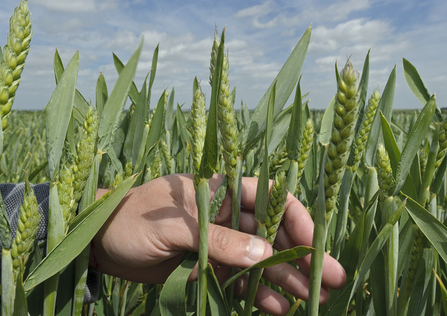In response, farming initiatives quickly developed including crop rotation with legumes, replacing low-yielding plants, such as rye, with higher-yielding types such as wheat or barley and land reclamation created more areas for farming, as seen by the draining of the fenlands of eastern England, where subsistence fishing and fowling was replaced by high-intensity arable cropping. This transformation of a wilder landscape was mirrored elsewhere in the UK with clearing of woodland and the reclamation of upland pastures, lowland heath and rough grassland into arable fields or improved grassland.
By the mid‐19th century cheap imports of grain from North America had led to much arable land falling into disuse or being converted to pasture as dairy and sheep farming became more profitable But during the Second World War this reduced capacity, and the unreliability of imports, led to a shortage of food and the consequent desire for self‐sufficiency and demand for an increased standard of living after the austerity of the war led to the Agriculture Act of 1947. The aim was to maximise food production and encourage a return to farming, which had been in decline due to inadequate farming wages. This was achieved in three main ways: securing farmer incomes via an assured market and guaranteed produce prices, improving farmer/tenant security and implementing high farming standards and good practice checks.
Farming practices became increasingly intensive in the post‐war period from 1945, with a 65% decline in the number of farms, a 77% decline in farm labour and an almost fourfold increase in yield. Farms became more specialized; increased use of machinery made operations quicker and more efficient, but resulted in the removal of 50% of hedgerows.
A major consequence of the intensification of agriculture has been a dramatic reduction in landscape diversity. At the turn of the century, much of British agriculture was of a mixed character, with both stock and crop husbandry occurring on the same farm. In the agriculture boom of the 1950s, a number of factors led to the divergence of agriculture in Britain, with arable farming predominating in the east and pastoral farming in the west. Increasing use of machines meant animal labour, and hence fodder cropping (root crops and oats), was no longer required; the advent of chemical pest control and increased availability of inorganic fertilizers reduced the need for crop rotations so land could be devoted to a cash crop all year, rather than having to lie fallow for part of the season. Individual farms became larger and are continuing to grow, particularly in the arable east of the country, with the result that larger blocks of land are being managed with the same aim.
The number and extent of chemical applications increased greatly; pre 1930’s pesticides were mostly preparations of lime, copper or sulphur but by 1997 344 pesticide compounds were available. Although more recently the amount of active chemical used has declined, the number and extent of applications (a better measure of environmental impact) has increased with most fields receiving multiple treatments and potentially with up to a dozen different chemicals.
Admission to the European Economic Community in 1973 produced the next set of significant changes to an already dramatic reduction in landscape diversity, as Britain became part of the EEC’s Common Agricultural Policy (CAP). The CAP was a system of subsidies paid to farmers to guarantee minimum levels of production, to ensure enough food across Europe for all and to ensure a fair standard of living for farm workers so very similar in aims to the Agriculture Act. Unfortunately by ignoring the rules of supply and demand, the Common Agricultural Policy was hugely wasteful, leading to overproduction and mountains of surplus produce as well as having major detrimental effects on UK wildlife, as also seen in Spain and Portugal who joined the EU in 1986.

